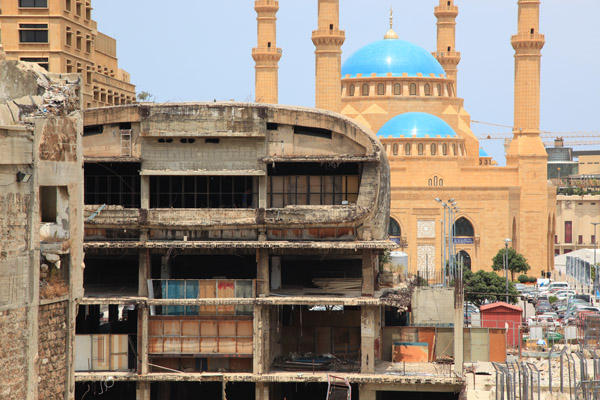Beirut/Damascus 2009

Prof. Jacques Herzog, Prof. Pierre de Meuron, Manuel Herz, Shadi Rahbaran, Ying Zhou
Exercise types: ‘e’ (Entwurf) with 'P' (Planung)
Group work in Basel and fieldwork in Beirut/Damascus
Start: Tuesday, 15. September, 2009, 10 AM at ETH Studio Basel, Spitalstrasse 8, 4056 Basel
CITIES IN THE MIDDLE EAST: Part One - Beirut/Damascus
Studio Basel investigates regions that are often ambiguous in their development, embedded both in processes of globalization, partially shaping it, or being affected by its repercussions. Places that maintain a spin, for they are connected to international energy flows that continue to evolve, without ever exploding or collapsing. These investigations are based on the assumption that contemporary cities do not develop towards a common vanishing point but rather reinforce, transform or adapt their specific traits. These processes are undertaken through their local specificity and historical tradition, but also by developing new modalities of transformation and novel forms of differentiation in the wake of the contemporary global networks. Cities are hence drawn back to their own material configuration through the processes of globalization. How are cities developing, changing and adapting their bodies, their physical configurations, when they are connected to the international energy flows? How are they reconfiguring their specific physiognomy? What makes them specific?
We can observe the cities in the Middle East at a crucial moment in time. Rich in architectural and urbanistic heritage and finding themselves at a turning point of political transformation and undergoing extensive (re-) construction, these cities grapple with questions of identity, globalization and a reconsideration of the notions of the public and the private. Beirut and Damascus have over the millennia of their existence experienced a long sequence of different empires and powers, each having had a physical and cultural impact on the fabric of the city. Dating back to neolithic times, both cities were sites where cultures ranging from the Canaanites, the Phoenecians, Romans, Mamluks to the Ottoman and French have been implementing their own ideas of how a city should be shaped and what kind of urban culture is expressed. Also throughout the twentieth century immigration of various refugee groups, such as the Armenians, Palestinians or Iraqis have produced new parts of the cities, based on distinct urban models. Most recently one can identify the influence from Gulf countries, bringing in new concepts of urbanity. The project aims at identifying and charting these different ‘conceptions of the city’ and how they have built up Damascus and Beirut over time and continue to shape them.
After the world witnessed the destructive quality of boundaries in Beirut in its most brutal way, the city is now actively employing tools of architecture and urbanism to overcome those divisions and create a common sphere. But other separations have remained, or have evolved in the last few years that are less immediate, though nevertheless having a decisive influence on the urban fabric. In Beirut and Damascus the schism between the visible and the invisible, between the public and the private, and the differentiation of areas of influence through urban markers is strong. Borders could be seen as being one of the basic building elements of a city. Cities are never completely open, nor fully closed. Instead of thinking of these open and closed elements in simple terms, we want to analyze the whole range of different models and typologies that exist within this spectrum.
Cities like Beirut, Tehran or Damascus are portrayed in ways heavily influenced by media, political interests and key events of the past. Whereas Beirut conjures up images of urban warfare, traumatic events like massacres or assassinations, but also the heydays of the ‘Paris of the East’ during the sixties, Tehran and Damascus are seen by the West to be caught behind a new iron curtain, representations of the ‘Axis of Evil’ or the ‘hideouts of terrorists’. All those mediated images are simplistic, highly clichéd and do not correspond with the conditions on the ground. The realities of everyday life, as well as the millennia-long history of urban settlement overshadow those ideological contemporary imaginations and require a different approach. Can we see cities like Beirut or Damascus as ordinary cities? This does not mean a negation of difference or a disregard of the political. On the contrary, an approach modeled upon how we study other cities worldwide, brings these differences to light in sharper ways.
PEOPLE: PROF. JACQUES HERZOG, PROF. PIERRE DE MEURON, SHADI RAHBARAN, YING ZHOU, MANUEL HERZ

